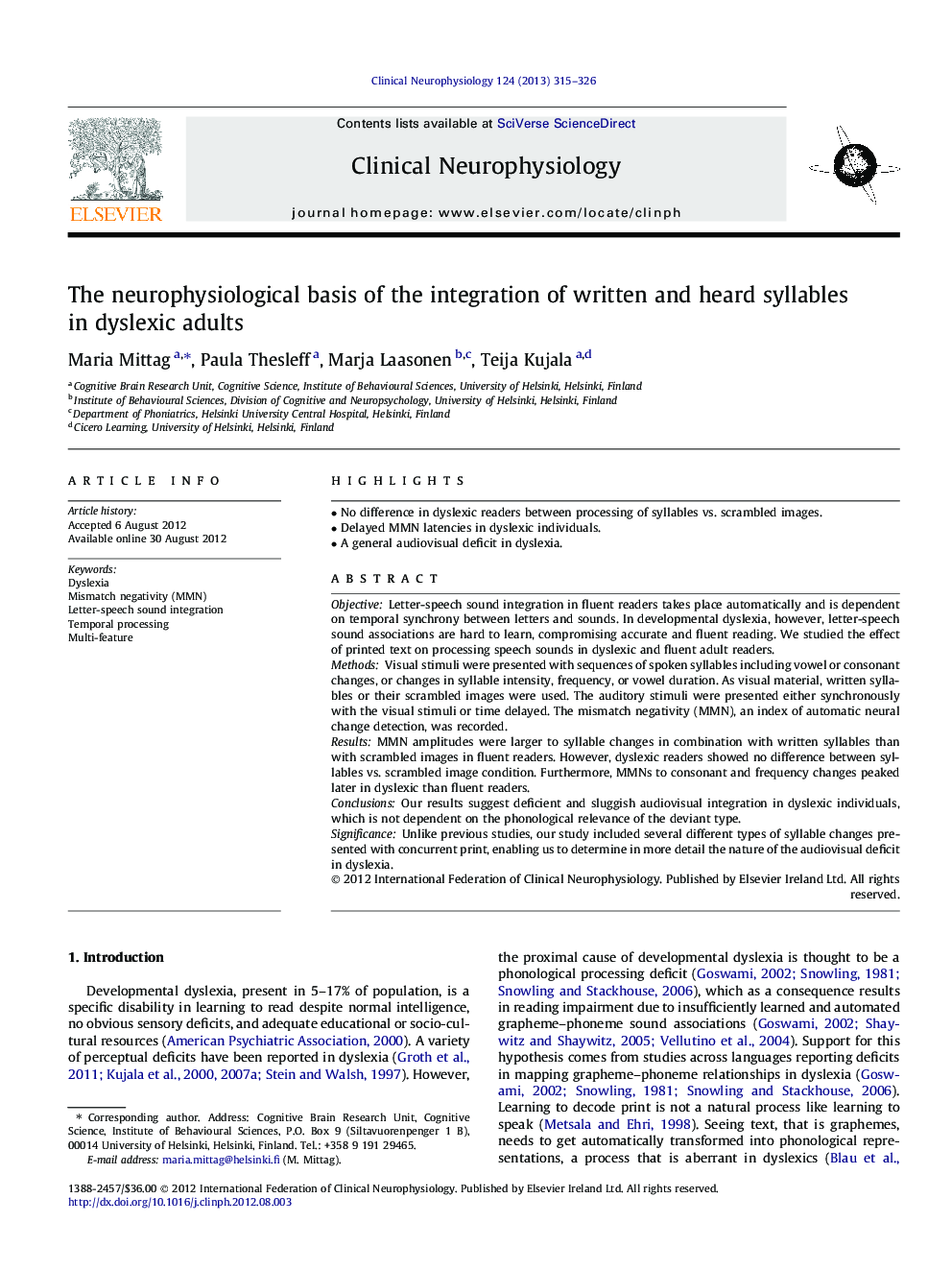| Article ID | Journal | Published Year | Pages | File Type |
|---|---|---|---|---|
| 3044612 | Clinical Neurophysiology | 2013 | 12 Pages |
ObjectiveLetter-speech sound integration in fluent readers takes place automatically and is dependent on temporal synchrony between letters and sounds. In developmental dyslexia, however, letter-speech sound associations are hard to learn, compromising accurate and fluent reading. We studied the effect of printed text on processing speech sounds in dyslexic and fluent adult readers.MethodsVisual stimuli were presented with sequences of spoken syllables including vowel or consonant changes, or changes in syllable intensity, frequency, or vowel duration. As visual material, written syllables or their scrambled images were used. The auditory stimuli were presented either synchronously with the visual stimuli or time delayed. The mismatch negativity (MMN), an index of automatic neural change detection, was recorded.ResultsMMN amplitudes were larger to syllable changes in combination with written syllables than with scrambled images in fluent readers. However, dyslexic readers showed no difference between syllables vs. scrambled image condition. Furthermore, MMNs to consonant and frequency changes peaked later in dyslexic than fluent readers.ConclusionsOur results suggest deficient and sluggish audiovisual integration in dyslexic individuals, which is not dependent on the phonological relevance of the deviant type.SignificanceUnlike previous studies, our study included several different types of syllable changes presented with concurrent print, enabling us to determine in more detail the nature of the audiovisual deficit in dyslexia.
► No difference in dyslexic readers between processing of syllables vs. scrambled images. ► Delayed MMN latencies in dyslexic individuals. ► A general audiovisual deficit in dyslexia.
